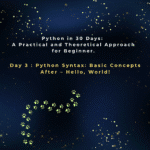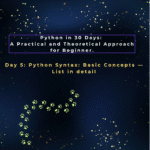Introduction
Welcome back for Day 4! Yesterday, you learned about basic data types like integers and floats. Today, we’re going to dive into one of the most powerful and commonly used data types: Python strings. Strings allow you to store and manipulate text, which is an essential skill for any programmer, whether you’re building a website or analyzing data. Mastering Python strings and their operations is a fundamental step in your coding journey.
You can follow along by running each code snippet in an online editor to see the results instantly, such as Trinket or Replit.
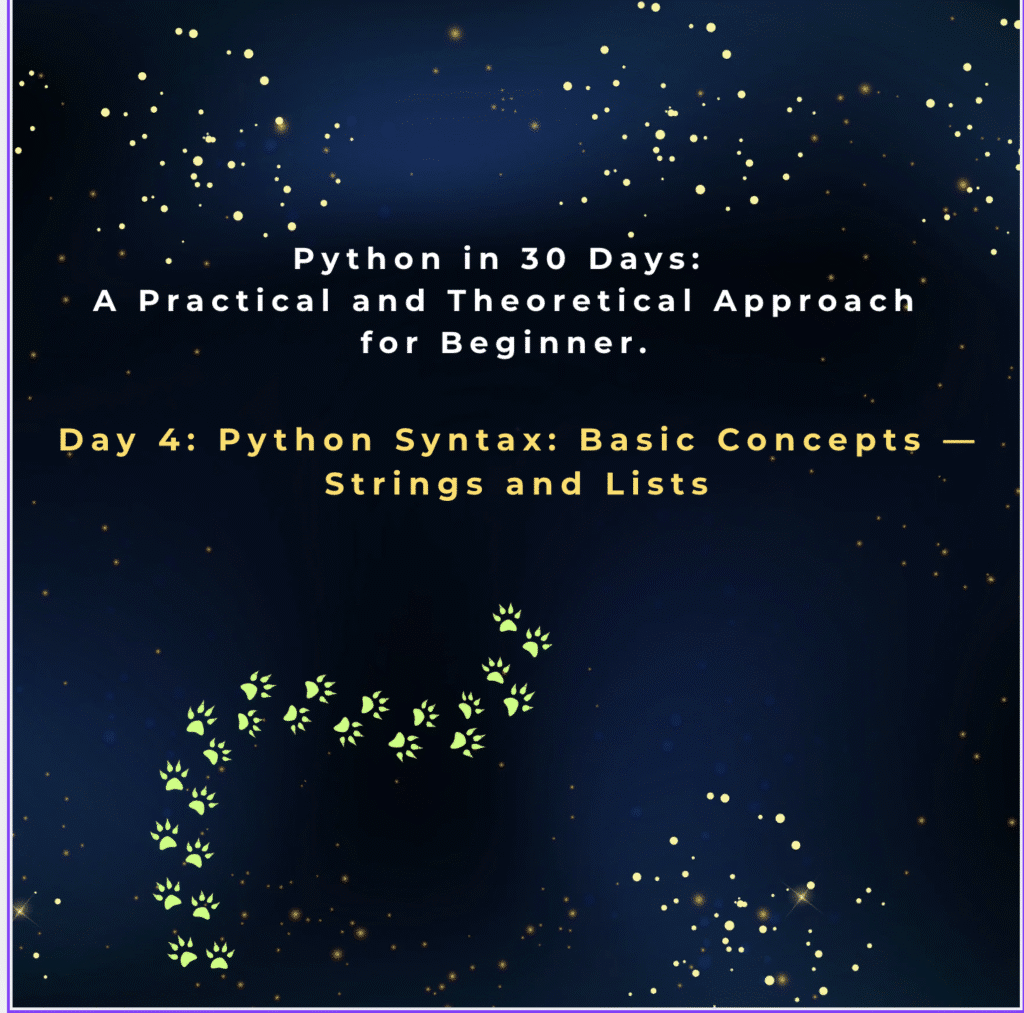
What are Strings?
In Python, a string is simply a sequence of characters enclosed in either single quotes (‘ ‘) or double quotes (” “). The choice is up to you, but it’s important to be consistent within your code. Using a different type of quote can also be useful to avoid needing escape characters, for example, if your text contains an apostrophe.
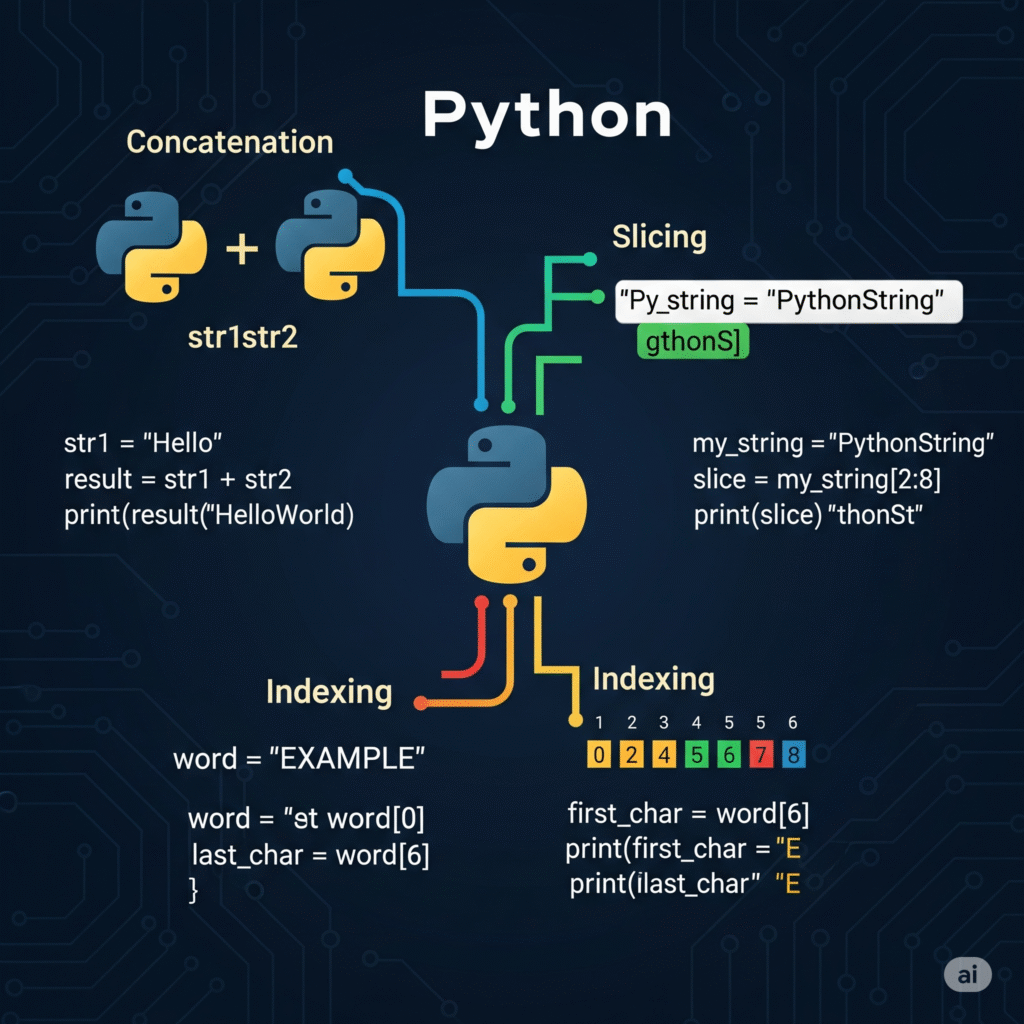
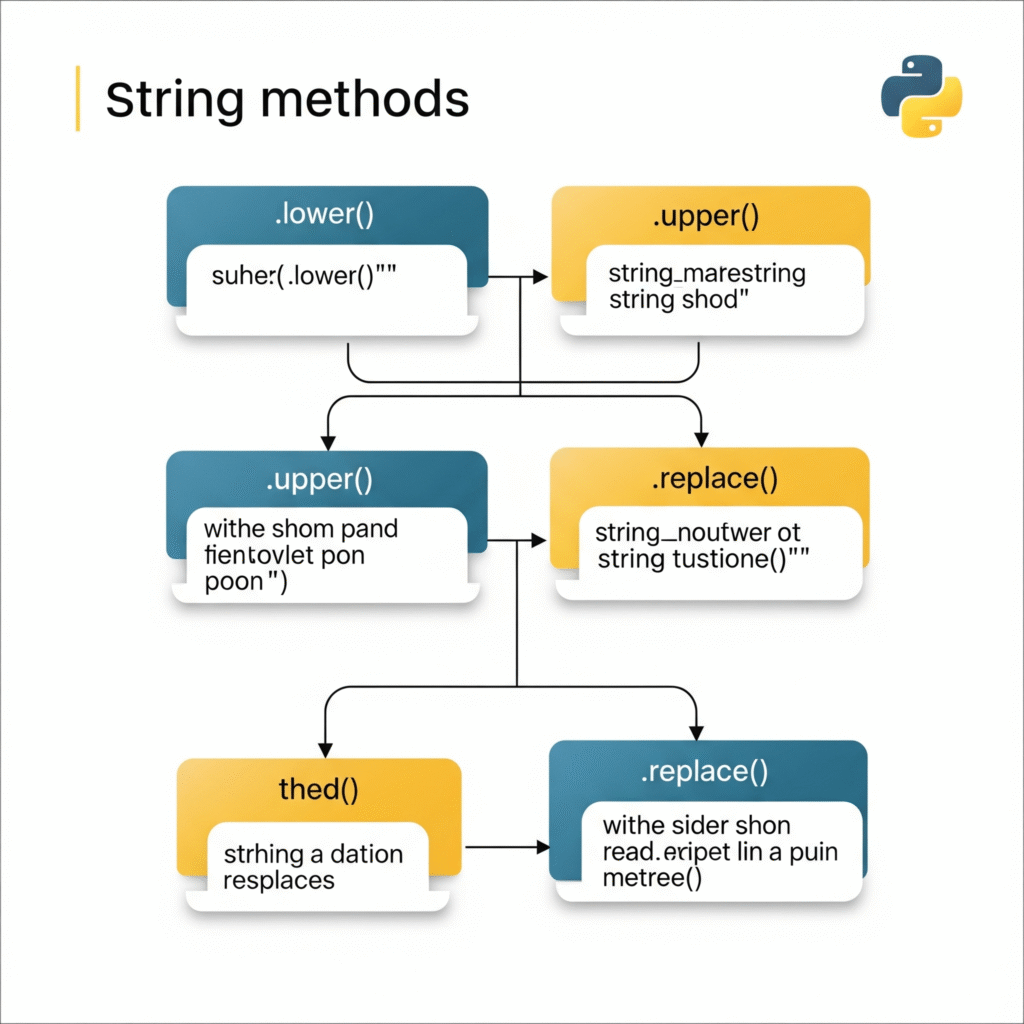
Python# Creating a string
message = "Hello, World!"
another_message = 'Python is fun.'
print(message) # Output: Hello, World!
print(another_message) # Output: Python is fun.
1. Python String Operations
1.1 Concatenation: Combining Strings
String concatenation is the process of joining two or more Python strings together to form a new one. You can easily do this using the + operator.
Python# String Concatenation
first_name = "John"
last_name = "Doe"
full_name = first_name + " " + last_name
print(full_name) # Output: John Doe
A modern and highly recommended approach for formatting strings is to use f-strings. By prefixing a string literal with the letter f, you can embed expressions inside it using curly braces {}. This is often more readable and efficient.
Python# Using an f-string
age = 30
full_details = f"{first_name} {last_name} is {age} years old."
print(full_details) # Output: John Doe is 30 years old.
1.2 Repetition: Repeating a String
You can repeat a string a certain number of times using the * operator, also known as the repetition operator.
Python# String Repetition
greeting = "Hi! " * 3
print(greeting) # Output: Hi! Hi! Hi!
While useful for simple tasks, be cautious with this operation on very large strings and high repetition counts, as it can consume a significant amount of memory.
1.3 Length: Finding the Size of a String
To find the number of characters in a Python string, you can use the built-in len() function. It counts every character, including spaces and punctuation.
Python# String Length
length = len(message)
print(length) # Output: 13
This len() function is incredibly useful for getting the size of any sequence, not just strings.
2. Slicing and Indexing Python Strings
Python strings are ordered sequences, which means each character has a specific position, or index. Indexing starts from 0 for the first character.
2.1 Positive Indexing
You can access a single character by its index using square brackets [].
Python# Accessing characters
my_string = "Python"
# P-y-t-h-o-n
# 0 1 2 3 4 5
print(my_string[0]) # Output: P
print(my_string[2]) # Output: t
Attempting to access an index that does not exist will result in an IndexError.
2.2 Negative Indexing
A powerful feature in Python is negative indexing, which allows you to count from the end of the string. The last character has an index of -1, the second to last is -2, and so on.
Python# Negative indexing
print(my_string[-1]) # Output: n
print(my_string[-2]) # Output: o
2.3 Slicing: Extracting a Substring
Python slicing allows you to extract a portion of a string (a substring) using the syntax [start:end]. The character at the end index is not included in the slice.
Python# Slicing a String
print(message[0:5]) # Output: Hello
print(message[7:12]) # Output: World
print(message[:5]) # Output: Hello (Starts from the beginning)
print(message[7:]) # Output: World! (Goes to the end)
You can also use a third parameter, [start:end:step], to skip characters. For example, my_string[::2] would output Pto, skipping every other character.
3. Escape Characters
Sometimes you need to include a character in a string that would normally cause a syntax error, such as a double quote within a double-quoted string. Escape characters, which begin with a backslash \, allow you to do this.
Python# Escape Characters
quote = "He said, \"Hello!\""
print(quote) # Output: He said, "Hello!"
The \ tells Python to “escape” the special meaning of the next character, treating it as a literal character instead. Other common escape characters include \n for a new line and \t for a tab. For a full list of escape characters, you can consult the official Python documentation.
Summary
Today, you gained a solid foundation in working with Python strings. You learned how to create them and perform essential string operations like:
- Concatenation & Repetition to combine and repeat text.
- Indexing & Slicing to access specific characters or parts of a string.
- Escape Characters to handle special characters within your strings.
Mastering these basic string operations is critical for handling and processing text-based data in Python.
The journey of learning what Python is is an exciting one, and this “30 Days of Python” series is designed to be your roadmap. Happy coding!

Dharamshala – Where Mountains Meet Monks
Introduction Tucked…
Baijnath Temple – The Timeless Shrine of Lord Shiva
Introduction In…
Norbulingka Institute – A Living Museum of Tibetan Art & Craft
Introduction In…
Bir Billing – The Paragliding Capital of India
Introduction Imagine…
Masroor Rock Temples – The Ellora of the Himalayas
Introduction Hidden…
Palampur – Himachal’s Tea Capital Hidden in Pine Forests
Introduction Tucked…








